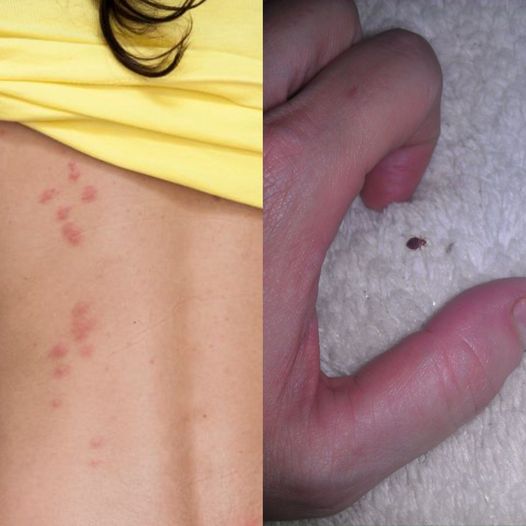ADVERTISEMENT
**Eliminating Bedbugs: Discover the Secret Ingredient in Your Cupboards and Garden!**
Dealing with a bedbug infestation can be a nightmare for homeowners. These tiny, blood-sucking pests are not only difficult to get rid of, but they can also cause sleepless nights, itching, and even allergic reactions. But what if the solution to eliminating bedbugs could be found right in your cupboards or garden? Believe it or not, a common ingredient that many people have lying around can help you take control of these pesky invaders. Let’s discover how you can tackle bedbugs with a natural, easy-to-find remedy that’s both effective and safe.
### The Secret Ingredient: **Diatomaceous Earth (DE)**
You may have never heard of **diatomaceous earth (DE)**, but it’s a powerful, natural solution to many pest problems, including bedbugs. It’s a fine powder made from the fossilized remains of diatoms, a type of algae. This powder is non-toxic to humans and pets, making it an ideal option for those who prefer to avoid chemical pesticides.
#### How Does Diatomaceous Earth Work?
Diatomaceous earth works by **mechanically** damaging the exoskeletons of bedbugs and other insects. When bedbugs come into contact with the powder, it scratches their outer shells, causing them to dehydrate and eventually die. The tiny, sharp particles of DE essentially “cut” into the protective coating of the bedbugs, leading to the loss of moisture and causing them to dry out. This process is slow, but over time, it is highly effective at eliminating bedbug populations.
### How to Use Diatomaceous Earth to Eliminate Bedbugs
Using diatomaceous earth to get rid of bedbugs is simple, and you likely already have many of the supplies you’ll need. Here’s a step-by-step guide to using this natural remedy:
#### 1. **Identify the Infested Areas**
The first step in dealing with bedbugs is locating where they are hiding. Bedbugs often lurk in cracks, crevices, and seams of furniture, particularly in bed frames, mattresses, box springs, and upholstered furniture. They can also hide behind baseboards, in electrical outlets, and even under loose wallpaper.
Take the time to inspect these areas carefully, as this will help you target the spots where the bugs are most concentrated.
#### 2. **Apply Diatomaceous Earth**
Once you’ve identified the problem areas, it’s time to apply diatomaceous earth. You can use a **duster or shaker** to apply the powder. Lightly dust a thin layer of DE on areas where you’ve spotted bedbug activity. Focus on places like:
– Mattress seams
– Bed frames and headboards
– Cracks in the walls or floors
– Behind furniture and baseboards
Be sure to apply the powder in thin layers—too much powder in one spot can create clumps, which may make it less effective. The goal is to coat the surfaces lightly but thoroughly.
#### 3. **Leave the DE in Place**
For best results, leave the diatomaceous earth undisturbed for **at least 48 hours**. During this time, the bedbugs will come into contact with the powder and start to die off. You may notice fewer bedbugs over the course of a few days as the powder takes effect.
4. **Vacuum Up the Powder**
After the recommended time has passed, it’s time to clean up. Use a vacuum cleaner to remove the DE and any dead bedbugs. Be sure to empty the vacuum bag immediately and dispose of it in an outdoor trash can to prevent any surviving bedbugs from escaping.
For Complete Cooking STEPS Please Head On Over To Next Page Or Open button (>) and don’t forget to SHARE with your Facebook friends
ADVERTISEMENT
